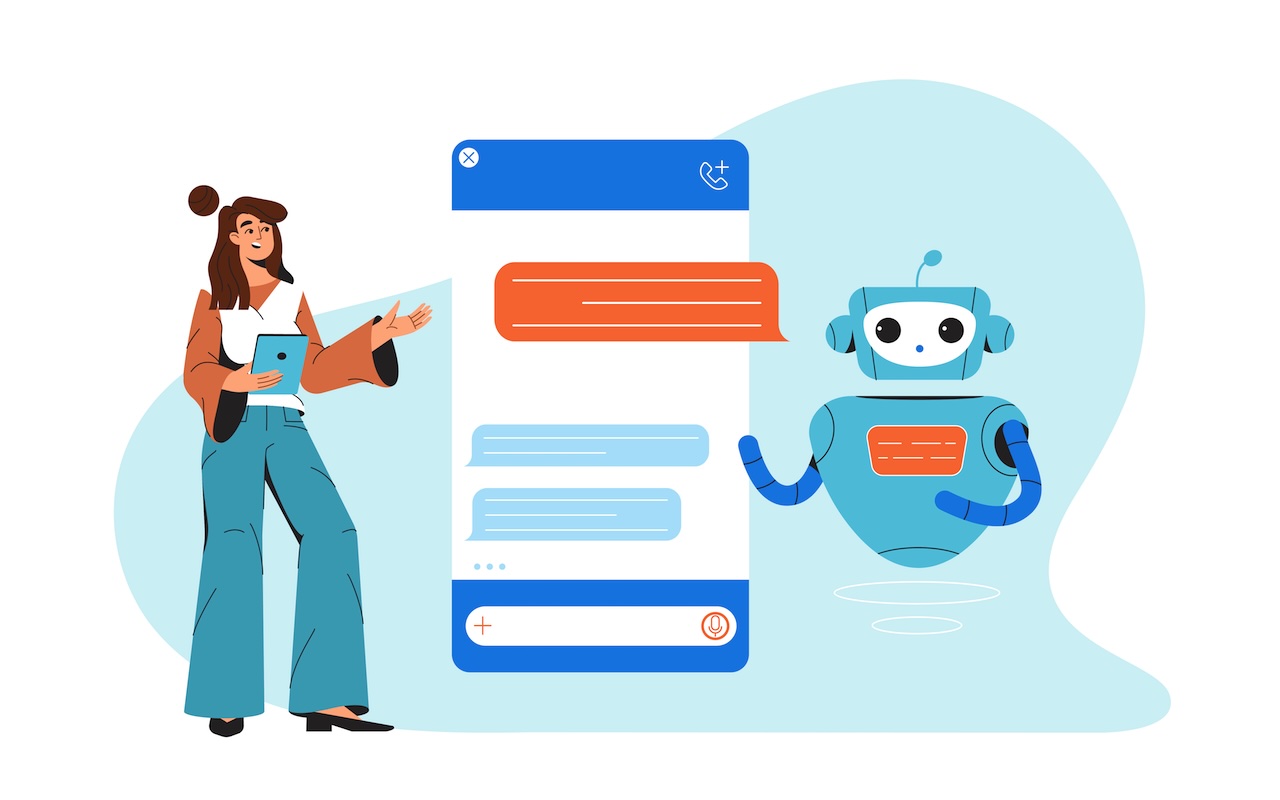
AI chatbots are a frontier tech solution that can handle millions of user conversations daily, reshaping how enterprises connect with their customers. In fact, there are ample use cases of bots handling user queries in industries like healthcare, ecommerce, finance, and others.
This being said, AI bot development can be considered a worthy corporate investment, redefining the customer experiences in the modern day. It is because they drive efficiency, help personalize user interactions, and reduce operational costs and personnel workload to a certain degree.
What’s more, they are extremely user-centric and business-friendly. The only contradiction here is the security risks it bears for your company. Some of these include prompt injections, phishing, and data leaks, among others.
In this view, this article explores why AI-powered chatbots may be your biggest cybersecurity blind spot. This is followed by discussing the effective ways to make bots more secure for a company’s digital operations in the present time.
Emerging Cybersecurity Risks Associated with AI Bot Development
As per Grand View Research, the AI bot market was at a market cap of $7.76 billion in 2024. Its projection is even higher for the year 2030, i.e., $27.29 billion, with a CAGR of 23.3% from 2025 to 2030. Given these growth prospects, companies need to increasingly invest in bots to enhance their CX. But leaders must duly consider the risks associated with this tech for achieving better results.
Here goes the list of cyber risks associated with chatbots.
1. Data Leakage
Oftentimes, chatbot interactions with users include customer details verification. So, if the bots are not well secured through encryption and API configurations, such information can be exposed to cyber threats. This may create critical non-compliance for companies.
2. Prompt Injection and Manipulation
Prompt injection and manipulation techniques target Gen AI and ML models to generate malware or reveal confidential information. Sharing an industry example, a trained hacker used the Claude chatbot to find cybercrime targets and write ransom notes in August 2025.
3. Phishing and Social Engineering Risks
Nowadays, cybercriminals rely on bots to create realistic phishing scams and automate deceptive messages that can trick humans into revealing sensitive business data. This allows them to gain access to sensitive user data, including important user details and financial data. Situationally, if this is compromised, companies may face data leaks, leading to loss of customer trust, identity theft, monetary losses, and compliance fines.
4. Integration as Weak Points
As we know, chatbots facilitate the workflows of present-day customer service. Fundamentally, bots use APIs to connect to CRMs, payment gateways, and ERP systems to provide real-time user support. So, if these APIs are not well secured, the situation can be detrimental for a business, leading to data leaks and customer trust erosion.
5. Data Poisoning
Furthermore, hackers use smart tools like Nightshade to internally manipulate AI models’ training data, thereby altering their responses. It may lead to hallucinations of these models, which include spreading wrong or misleading information. This may also bring forth an impact on customer trust and brand reputation in the market. Businesses need to rely on strengthening chatbot security in the AI bot development process itself to prevent these risks.
Comprehensive Overview of Chatbot Security Gap Consequences
After understanding these technical vulnerabilities, let us consider how companies are actually impacted by these risks. Significantly, these will contribute towards reinforcing secure chatbot development solutions across the board and management.
Primarily, one of the business implications of a poorly secured bot technology is the stress of non-compliance mandated by institutions like GDPR and HIPAA.
Moreover, data leaks directly lead to customers losing trust in your company’s services. This loops in the damage to customer reputation and stakeholders' trust.
Due to prompt injection and phishing attempts, companies may face situations where data exfiltration or malware transmission occurs. This exposes sensitive business information, leading to financial fraud. As a result, the company’s reputation can be at stake here.
Often, chatbots support business integrations like CRM, ERPs, and payment gateways, as these facilitate seamless UX. Here, in case of a chatbot security gap, the most common business complications may be operational disruption and data theft. Simply put, the key business impacts may be in terms of financial losses, legal consequences, reputational losses, and operational disruptions in workflow.
From a corporate perspective, chatbot security is not just a minor business risk but a critical cybersecurity concern. To safeguard against this damage, leaders may consider hiring a seasoned team providing application security consulting services. They have the right know-how and tools to identify and address these threats well in advance, while ensuring security in real time.
Best Practices For AI Bot Development
Interestingly, as brands understand these vulnerabilities, there comes a need for strategic planning and incorporating practices to tightly secure AI-powered chatbots. Otherwise, your valuable records might be in the hands of cybercriminals, affecting your brand’s reputation and business continuity.
To prevent this case, here are some proactive safeguards that can be implemented by companies to secure AI bot development solutions.
Data Encryption and Access Controls
A user’s conversations with the chatbot include discussing PIIs and important customer information that need to be protected with encryption. Alongside, role-based access control (RBAC) is another important measure that ensures strictly authorized access to this sensitive data. It ensures the proactive protection of information from flowing in the wrong direction, i.e., unauthorized personnel and cybercriminals.
Regular Security Testing and Red Teaming
Leaders are recommended to incorporate penetration testing and vulnerability scan checks at regular intervals to assess chatbot security frameworks. Red teaming takes a step ahead and helps uncover hidden system weaknesses by simulating real-world attacks. It is a comprehensive measure to manage chatbot security in the era where emerging threats are increasingly prevalent in this digital landscape.
Real-time Monitoring
Businesses must also focus on conducting real-time monitoring and checks to track user requests and understand their related chatbot responses. This can flag unusual patterns, along with analyzing the activities of threat vectors. This aligns with the business goal of continuity and proactively helps in ensuring chatbot security.
Ethical AI and Governance Policies
Ethical AI helps in the responsible usage of artificial intelligence, and it strongly supports the idea of compliance and governance in an organization. Beyond this perspective, it helps you keep in check the biases in your AI models. This allows its rectification, thereby upholding user trust and avoiding the presence of hallucinations in responses.
Human Oversight Loops
This implies enabling trained personnel to aid the process of handling complex user queries. Queries that seem ambiguous can also be securely transferred to human agents. It essentially helps prevent bots from mistakenly sharing confidential information with users.
Final Thoughts: Adoption of Secure AI Chatbots
As chatbots become an increasingly important part of digital engagement with users, their security becomes an equally important consideration for businesses. It is because speed and efficiency need a stronger backdoor of security to deliver CX today. Adoption of secure AI chatbots is a real possibility through the application of the mentioned best practices, like data encryption, red team assessments, real-time monitoring, and so on.
Beyond these measures, application security consulting services offer a more comprehensive enterprise-wide chatbot security solution. The theme of this subject lies in keeping cyber-resilience at the center of AI bot development solutions to safeguard customer data.
Featured Image by Freepik.



Comments (0)
No comment